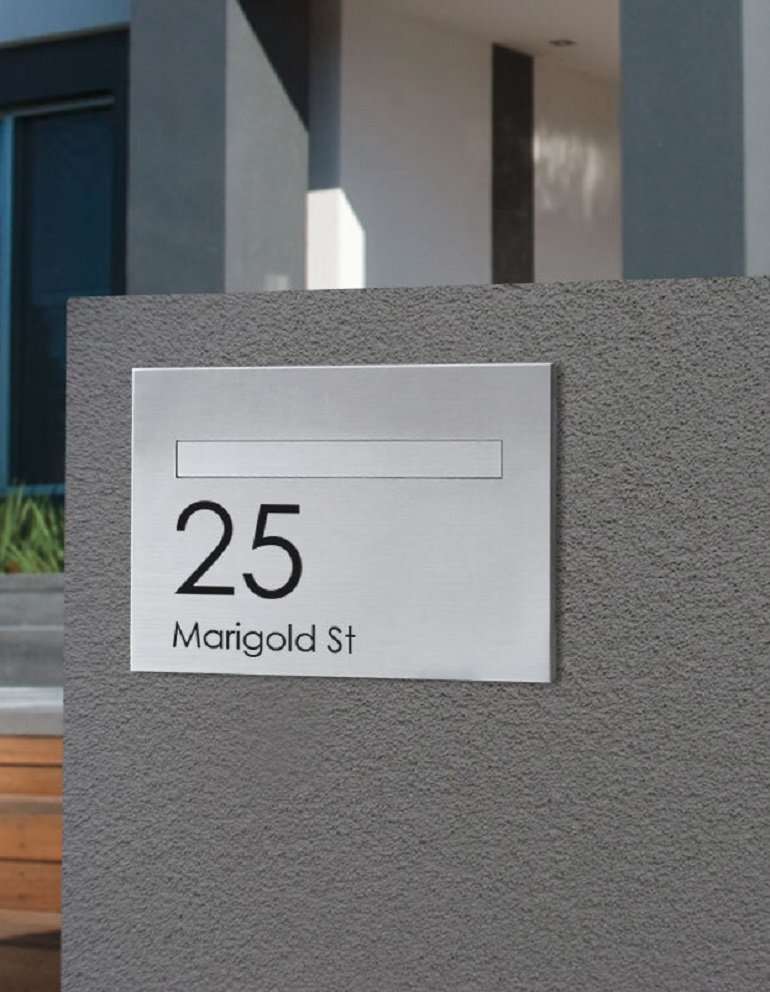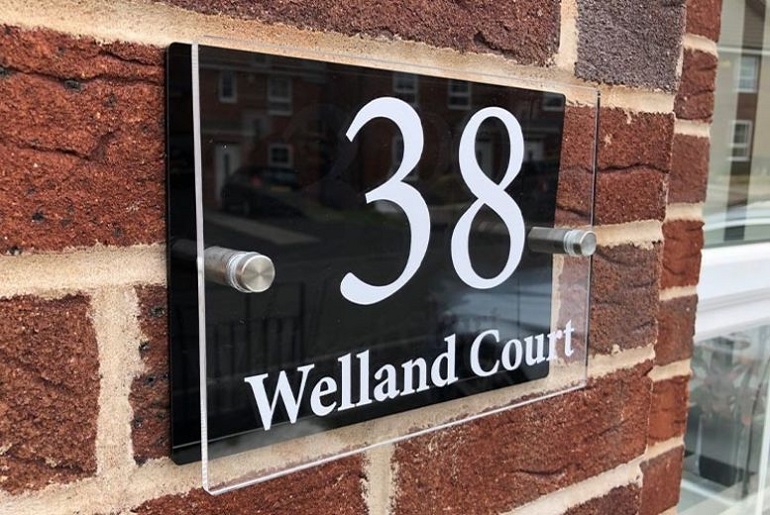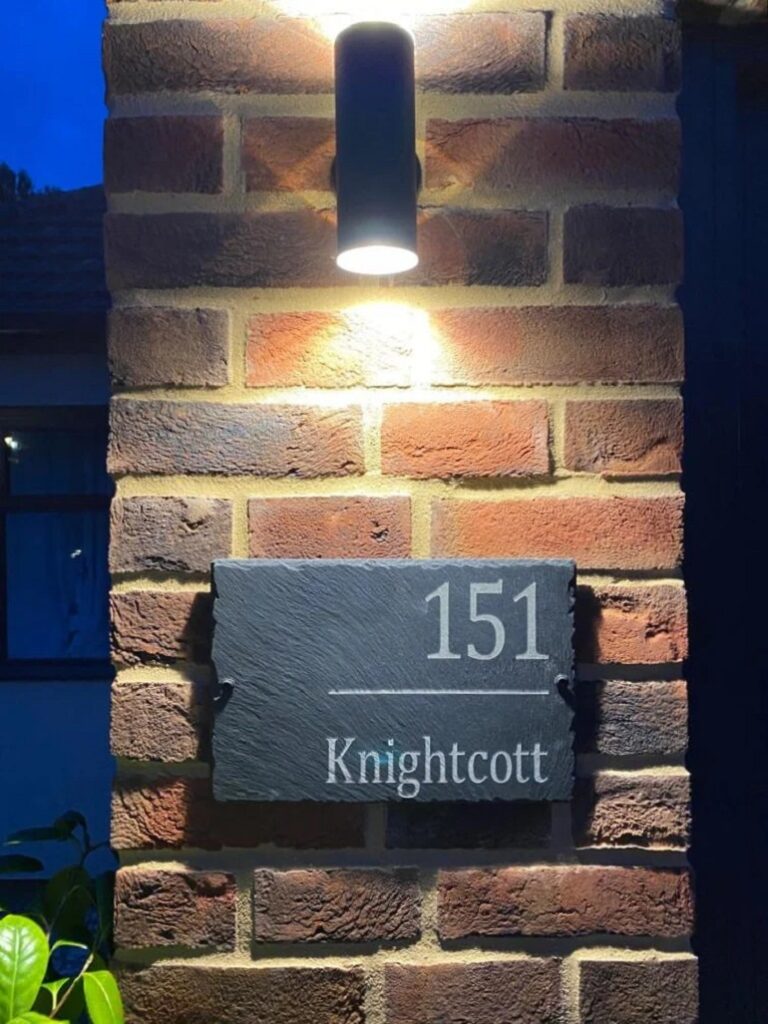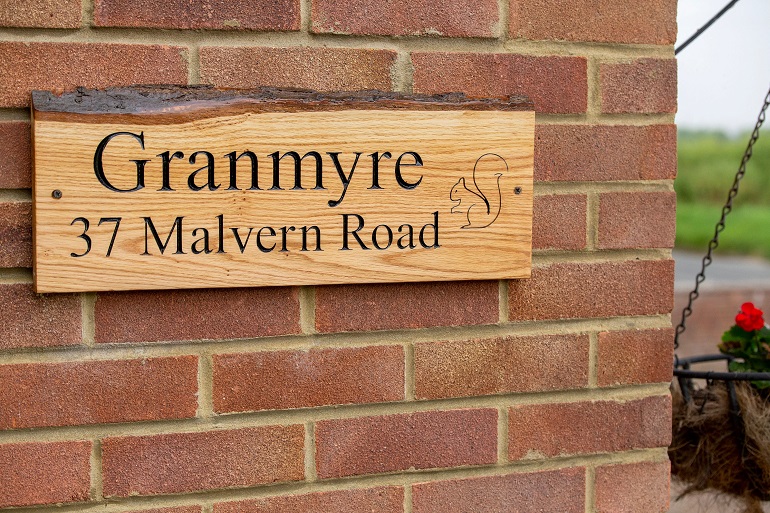House numbering, originating in Paris in 1512, has become a universal practice. Five hundred years later, we use house numbers everywhere as a powerful organisational tool that makes logistics easier. Today, every nation has its distinct system for allocating home numbers.
Even though a worldwide practice, some people still don’t see the need to have a visible house number. Many believe that technology significantly impacts this due to the ease with which one may now search for a home without knowing the precise address. Thanks to modern technology, everything is readily accessible. You may quickly pin your address and give the direct link to a buddy if you need them to pick you up.
The need for a visible home number persists despite technology advancements for many significant reasons. Here’s why you should consider a house number sign for your home and how to choose the right one for you.
The Advantages of Having a House Letter Sign
A home address plaque can enhance convenience, safety, and efficiency in your daily life.
- Compliance with the law. In some states, displaying your house number is legally required. You should place it on a building or fence facing the street, following specific standards set by your area.
- Convenience for postal services. A house sign with your address and number ensures accurate and timely mail delivery, preventing misdirected mail and unnecessary disturbances from neighbours.
- Prompt emergency services. A visible house number sign allows emergency responders to quickly locate your residence, potentially saving precious time during critical situations. Ensure your house number is well-lit for better visibility.
- Easy access. House letter signs simplify finding your home for loved ones, making visits more convenient and enjoyable.
- Efficient home services. When you make your house number visible, you can facilitate the arrival of service crews, resulting in prompt and efficient service delivery. Avoid additional fees and delays caused by difficulty in locating your address.
- Expedited deliveries. In an era where deliveries are prevalent, a house sign ensures smooth and hassle-free receipt of packages and goods.
- Streamlined business transactions. For e-commerce businesses, a visible house number enables smooth communication and pickup of items by third-party service providers, ensuring efficient shipping and customer satisfaction.
How Do I Choose a House Sign?
Choosing a house sign involves considering several factors to ensure it suits your style, improves your home’s curb appeal, and meets your practical needs. Here are some key considerations to help you choose a house sign.
Material
Materials commonly used for making house signs include metals (such as stainless steel, aluminium, brass, and bronze), acrylic, wood, and slate.
Metals

You’ll notice durable and versatile metal house signs when browsing the wide range available. Metals, particularly stainless steel, are often preferred for house signs due to their numerous benefits:
- Durability. Stainless steel is highly resistant to corrosion, rust, and weathering, making it suitable for outdoor use. It withstands harsh conditions and maintains its appearance over time.
- Aesthetic appeal. Stainless steel exudes a modern and sleek look, complementing various architectural styles. It adds a touch of sophistication and elegance to your home’s exterior.
- Versatility. Stainless steel can be fabricated into different shapes, sizes, and designs, allowing for customisation and personalisation. It offers flexibility in terms of fonts, patterns, and finishes.
- Low maintenance. Stainless steel house signs require minimal upkeep. They are easy to clean, usually requiring only a wipe with a damp cloth or mild soap solution. Stainless steel is also resistant to fading and discolouration.
- Longevity. With its excellent durability, stainless steel house name signs have a long lifespan, ensuring that your plaque will remain intact and legible for years.
Acrylic

Acrylic is a popular material choice for house signs due to its versatility, affordability, and durability. It is a type of plastic that offers a sleek and modern appearance. House signs of this material are often customisable and available in various colours, shapes, and sizes. They’re lightweight and easy to install. Acrylic is resistant to fading, UV rays, and weather conditions, making it suitable for outdoor use. However, acrylic signs aren’t as durable as metal house signs and can be more prone to scratching or damage over time.
Slate

Slate is a natural stone material often used for house signs, known for its timeless and elegant look. It has unique texture and colour variations, adding character and charm to a plaque. Slate signs are durable, weather-resistant, and can withstand outdoor elements. They offer a traditional and rustic aesthetic that complements a range of architectural styles. However, slate signs may require more maintenance compared to other materials. Regular cleaning and sealing may be necessary to keep the plate in good condition and prevent staining or weathering.
Wood

Woodhouse signs provide a warm and inviting appeal to a home’s exterior. They offer a natural and organic look that suits various design styles, from traditional to rustic. Wood signs come in different types of wood, such as cedar, oak, or mahogany, each with its unique grain and colour, and there are often customised options with carved or engraved lettering and designs. However, wood is more susceptible to weathering and requires regular maintenance to protect it from moisture, rot, and fading.
Other Considerations
Aside from the material, there are some additional factors that you need to consider when choosing a house sign. By evaluating these factors and weighing your preferences and needs, you can pick a house sign that not only enhances the aesthetic appeal of your home but also serves its practical purpose of identifying your property.
Style and Design
Choose a style and design that aligns with your taste and complements your home’s architecture, giving it a stylish look. Consider font style, size, colour, shape, and any decorative elements or graphics you want to include.
Visibility and Legibility
Ensure that the house sign is easily visible and legible from a distance. Choose a font and size that allows for clear readability. Consider factors like the contrast between the background and lettering and any lighting options that enhance visibility, especially during nighttime.
Customisation
Determine if you want a custom-designed sign that reflects your unique preferences or a pre-designed template. Customisation options may include personalised text, graphics, borders, or logos.
Installation
Consider the installation requirements and options for the house sign. Some signs require mounting hardware, while others can be freestanding or attached directly to a surface. Ensure you have the necessary tools and expertise, or consider professional installation.
Maintenance
Consider the maintenance requirements of the chosen material. Some signs may require regular cleaning, sealing, or repainting to maintain their appearance and durability.

